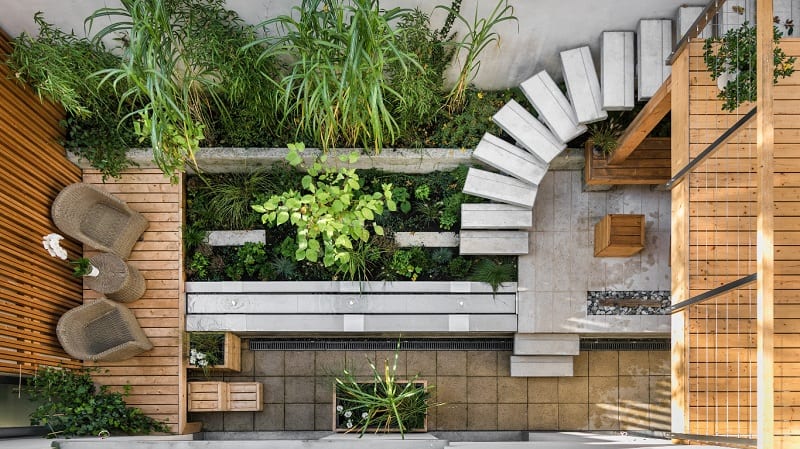For many people, one of the most difficult aspects of design is figuring out just how many principles there are to consider in the first place. A quick browser search will tell you that even experts can’t seem to agree.
The fact is that the principles of design are simple enough. The language, however, can be as diverse as the opinions surrounding the subject.

The Principles of Design in Gardening
Contents
In gardening, you can narrow the principles of design to three main categories.
Within these categories are myriad other design principles you might recognize instinctively – like a natural-born musician will understand scales.
The groupings below constitute the fundamentals of garden design.
Order
Order refers to the basic structure of the garden. Order can be obtained through symmetry. In formal gardens, this is often achieved through repetition of plants or colors, or through balancing bright features with complementary textures.
In general, experienced designers say you should avoid a slapdash arrangement. You don’t have to put a plan down on paper, but you should consider where you want to situate your plants before digging holes in your backyard.

Harmony
You achieve harmony when the parts of your garden somehow work together as a whole. You may have come across gardens that feel like they are mugging your senses.
That happens when there are too many disparate features within a single design.
Harmony is built on limiting the color palette, the repetition of key plants throughout the garden, the repetition of colors and structures through the boundaries.
You can also create harmony by growing your flowers, herbs, grasses, shrubs, and trees along a clear focal point, idea, or purpose.

(Photo: Brewbooks/Flickr)
Rhythm
Order and harmony will create a pretty vista, but your garden – like any other space – can still look static and uninteresting after a while.
To stimulate interest, you need to keep the beholder’s eye moving. The spaces between repeating elements can create e a sense of rhythm, similar to the way syllables in a poem can create meter.
You don’t want visitors viewing your garden darting their eyes every which way, of course.
You want to gradually guide them by directing their gaze. You can accomplish this with subtle changes in height or color, or interesting focal points or seating that invites them to tarry.

(Photo: Brewbooks/Flickr)
Your garden is always a work in progress.
These elements work together and should be ideas for you to tinker and employ when you design your garden. They are tools you can use.
If you prefer, you can say they are rules you are meant to break.
Don’t let them hobble you with the fear of getting your garden’s design wrong. Gardens are a work in progress. They change, grow, and evolve with you.
Ultimately, the only real rule in gardening is that you enjoy yourself.








